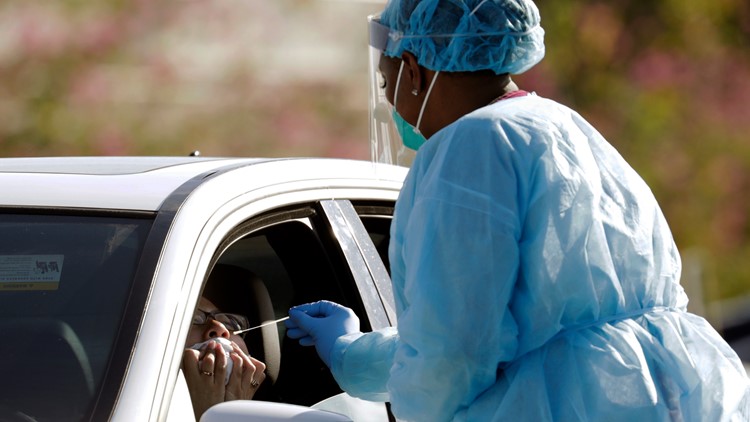INDIANAPOLIS — With 45,000 COVID-19 cases reported in just one day this week (compared to 5,000 in the European Union), it is becoming clear the United States is flunking its pandemic response in an epic fashion.
Had Americans opted to wear face masks and continue social distancing, we might have avoided the hard choices that face our governor and mayors. And this is the first wave of COVID. The second wave has been forecast for later this fall and winter.
Upwards of 75% of Hoosiers live in urban areas and the impacts of the COVID-19 pandemic and subsequent stratospheric job loss portends to significant revenue loss for municipalities. That could mean tax and fee increases for those residents.
An analysis by Ball State’s Center for Business and Economic Research finds that the economic shutdown caused by COVID-19 has deeply damaged the state’s economy. The study released on June 12 estimates state and local governments are now facing tax revenue losses for all local governments ranging from $240 million to $700 million in 2020. CBER anticipates tax revenues will rebound by the end of 2021 but remain beneath the 2019 levels by as little as $39 million and as much as $559 million.
The state is expecting a $2 billion revenue shortfall by the time the biennial budget ends in June 2021.
“Our scenarios reflect a state that will not fully recover from this pandemic before 2022, if not much longer,” said Michael Hicks, CBER director. “These estimates are for a deep and lengthy downturn, and each of our scenarios is among the seven worst since the start of the Great Depression.”
According to Accelerating Indiana Municipalities President Matt Greller, some of the impacts won’t be fully realized until 2022. That’s when the big one - revenue from the state income tax - will be fully realized. “It’s significant,” Greller explained Wednesday on the effects of the pandemic.
That includes the potential dramatic rise in utility rates. When Gov. Eric Holcomb imposed the pandemic shutdown in mid-March, he included a no-disconnect order. With schools and major industrial users closed, many municipal utilities lost a significant revenue source. “That will have to be made up by rate payers,” Greller predicted.
The BSU study concentrated on revenue impact areas that include utilities, gas tax distributions, property tax collections, and income taxes.
Gas taxes payments were down 60% during the shutdown. “That has been a pretty big hit with cities and towns,” Greller said. “I expect that to recover pretty quickly.” Part of the gas tax went to Holcomb’s Community Crossings program, and that pool of money could be reduced by 30%.
Property tax collections are also down, with some localities experiencing 80% to 85% collection rates when they are normally in the 95% range. Greller said the unknown here is how banks are handling escrow accounts. May distributions were normal, so November will give mayors, city and county council members a better idea of how big the shortfalls will be.
The immediate hit comes with income taxes, “which concerns me the most,” Greller said, particularly after Gov. Mitch Daniels’ constitutional property tax caps from a decade ago shifted much local funding to that silo from property taxes. “We won’t see that reduction distribution for what’s not being collected until 2022.”
How will municipalities respond to these cascading shortfalls? “We’re talking several strategies,” Greller said. “Some are legislative focused, some administrative, some congressional.” He said the state received $300 million in congressionally-funded CARES Act money, with funds specifically earmarked for cities of 500,000 population or more, meaning only Indianapolis qualified. As for the rest of the state’s municipalities, CARES Act funds cover only COVID-19 related expenses. Gov. Holcomb announced this week that $25 million will be available in the 91 other counties for rental assistance.
“Cities and towns have very little direct COVID-related expenses. That legislation mandated no revenue replacement. We need to lobby Congress for revenue replacement,” Greller said. “We’ve been meeting with the Indiana delegation with a series of Zoom meetings. They are indicating a second stimulus has a long, long way to go.” While a second round of checks to individuals appears more likely, “there is very little interest” in federal funding for municipal operating expenses.
As for the General Assembly during its biennial budget session, along with the $2 billion hit for the current biennium, Gov. Holcomb and legislative leaders have said there will be no K-12 education cuts during the current budget. That will devour most of the state's $2.2 billion surplus that was designed for a significant recession.
What we are facing now is a second Great Depression.
Greller was unsure what municipal governments will ask. “The timing isn’t right to request more taxing authority,” he said. He suggested the state could grant “more flexibility” in transferring funds between accounts, without having to reimburse the original fund. He also suggested a “careful examination of reducing restrictions on gas tax money.”
He doesn’t expect many layoffs in the immediate future. Many cities and towns have suspended summer parks programs and haven’t opened pools, so many seasonal employees weren’t brought on. He said one big city mayor told him he has 20 to 30 open jobs, with a hiring freeze likely. That could be an emerging trend as municipalities move into their budget sequence late this summer and autumn.
The columnist is publisher of Howey Politics Indiana at www.howeypolitics.com. Find Howey on Facebook and Twitter @hwypol.



